Clematis mountain Rubens - planting and care rules
Perennial mountain clematis Rubens, originally from countries with subtropical and temperate climates, has won the hearts of many flower growers. This is one of the best varieties of the Montana group among tall perennials. Consider what a vine looks like, how to plant it correctly and what kind of care it needs after that.
- General information about the variety
- Landing rules
- Timing
- Place and soil
- Selection and preparation of a seedling
- Landing technique
- Care requirements
- Watering
- Top dressing
- Pruning
- Preparing for winter
- Reproduction methods
- Cuttings
- By dividing the bush
- Stem layering
- Diseases and pests
- How to apply in landscape
- Gardeners reviews
- Useful videos
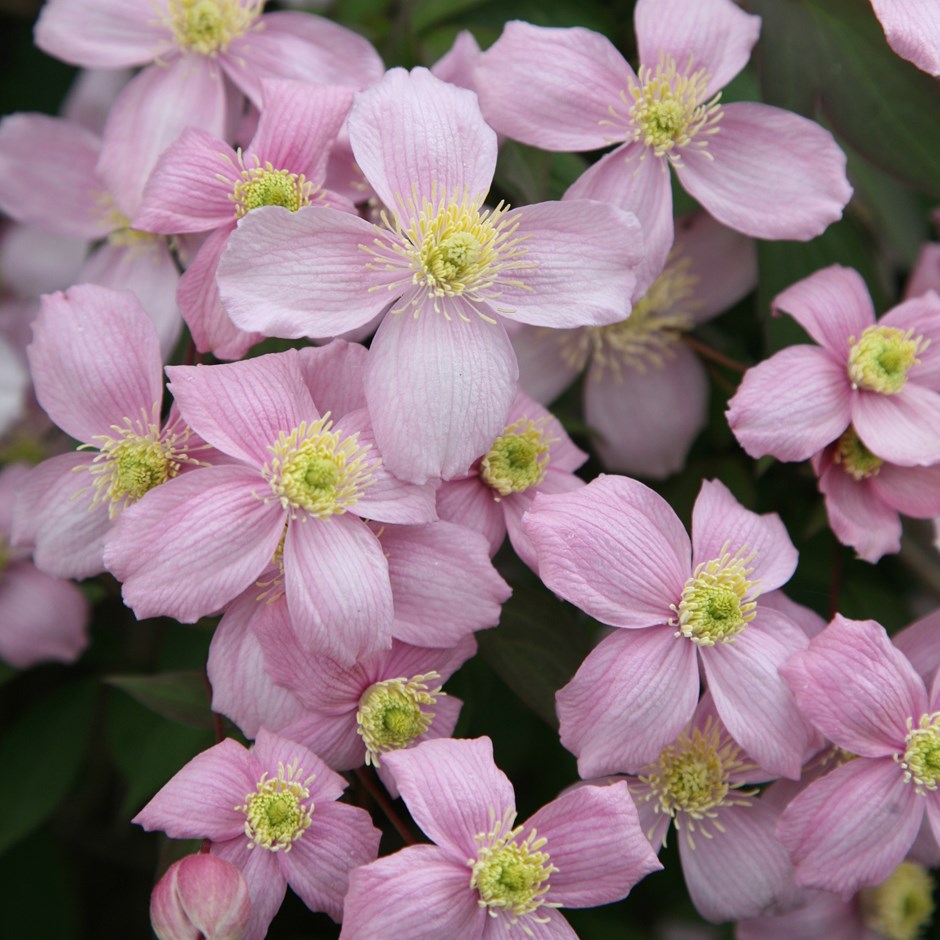
Clematis mountain rubens photo
General information about the variety
Botanical name - clematis montana var. Rubens. A large perennial that is characterized by rapid growth and bright flowering.
External description:
- the length of the stems is from 6 to 10 m;
- crown circumference - 1-1.2 m, characterized by intensive growth - during the growing season it can stretch by 1.5-3 m;
- shoots of purple color, tough, cylindrical;
- green leaves with a bronze sheen, up to 10 cm in size, with jagged edges;
- inflorescences are small - up to 6 cm in diameter;
- 4 petals are formed in one bud;
- flowers come in different shades of pink - from light to deep dark.
The bloom is profuse and lasts throughout the summer. During this period, clematis thinns the pleasant aroma of vanilla. Pleases with delicate flowers twice a year - in May-June and again in July-September.
Possesses an average degree of frost resistance - safely tolerates a drop in temperature to -15 ° C without shelter. At lower rates, it needs insulation. Immunity against diseases is high, but with proper attention and care.
Landing rules
The successful cultivation of small-flowered liana depends on several factors - the quality of the planting material, the place and the soil.
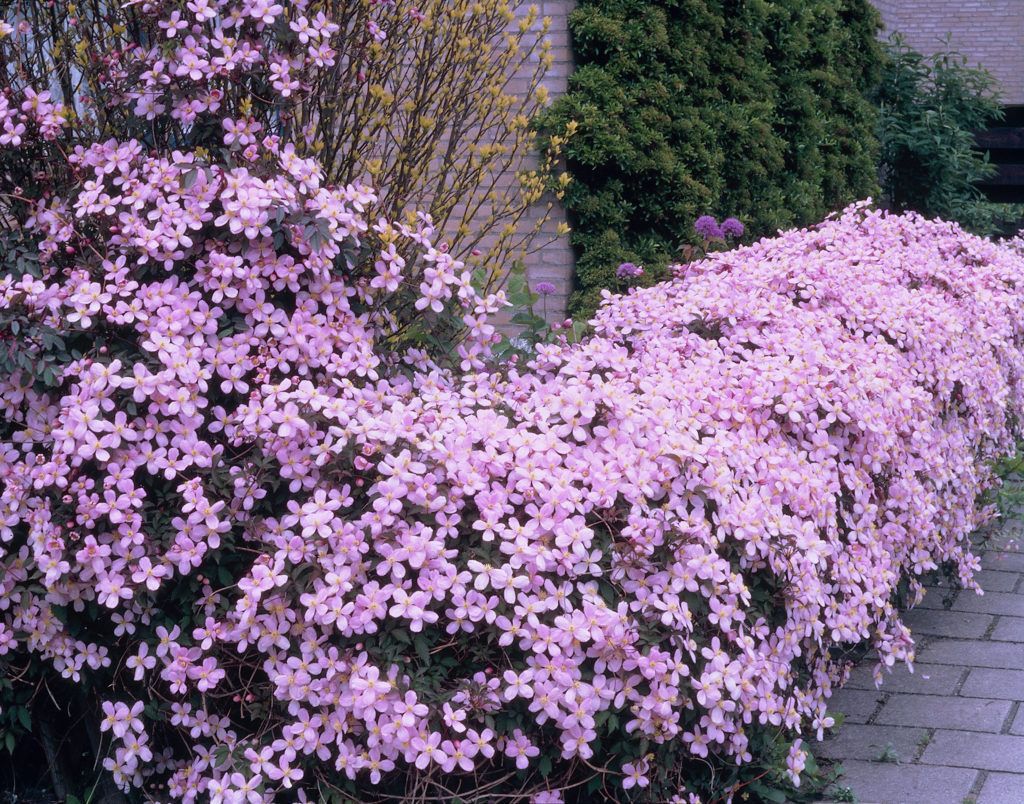
Clematis rubens trimming group
Timing
The best time to plant bushes is spring. Usually, the procedure is carried out in the middle or at the end of April, when the threat of return frosts has passed and the soil warms up to a temperature of 10-12 ° C.
When grown in the southern zone, they are planted not only in spring, but also in autumn - until the end of September. If planted later, the plant may not have time to take root before the onset of persistent cold weather and will freeze.
Place and soil
It prefers to grow in a sunny place where there is no wind and moisture stagnation. Choose an area with diffused lighting and shade during lunch hours. You can plant a liana at a distance of 50 cm from the walls of the house, near an arch, a gazebo or any other vertical structure, since in the future it will need a solid support.
The soil should be slightly acidic (6 units), light, loose and rich in nutrients.
To improve the structure of clay soil, the site is sprinkled with sand, vermiculite or any other baking powder - 20 kg per 1 m². When planting on sandy loam, add the same amount of clay.
The place for planting is freed from plant debris, other garden debris, dug deeply and leveled.
Selection and preparation of a seedling
Clematis can be purchased at a specialist gardening store.The price for one seedling with a height of 80 to 100 cm is 850-880 rubles.
The further growth and flowering of the bush will depend on the quality of the bush. Therefore, when choosing, carefully inspect its crown so that there are no dry areas, yellow, black spots, growths, mold and mechanical injuries on it.
Give preference to grown specimens with several well-leafy shoots - they have a developed root system, so they will successfully take root after transplantation.
Seedlings are sold in plastic containers or with an earthen clod so that the roots do not have time to dry out before planting in open ground. First, they are soaked in cold water for 2 hours, then cut by 2-3 cm. Such manipulations stimulate rapid rooting.
Landing technique
The landing holes are harvested two weeks before the planned landing, so that the embedded components have time to settle. When growing in groups, it is necessary to maintain a distance of at least 1 m.
The size of the holes should be twice the size of the rhizome - the approximate parameters are 50x60 cm. A little pebbles, brick chips or crushed stone are poured into the bottom. Drainage will ensure a good drainage of moisture.
A fertile composition is poured on top of half the volume. Mix a bucket of dug earth with 5 kg of humus, 300 g of wood ash, 100 g of superphosphate and 80 g of potassium sulfate. The mixture is trampled down, a hole is pulled out in the center, the roots are lowered into it, covered with the remaining soil to the top, and watered. Then mulch with peat or compost. The bush is tied to a support, placing the stems in the desired direction.
When planting seedlings with lignified branches, it is necessary to deepen the root collar by 10-12 cm, which will further stimulate good branching. If you are planting a plant with green stems, do not deepen, as this can lead to rotting of the root zone.
Care requirements
Due to its good winter hardiness, disease resistance and the ability to safely tolerate a haircut, this culture is not considered pretentious in care. But if you want to achieve maximum decorativeness from it, you need to regularly moisten it, feed it, loosen it and insulate it for the winter.
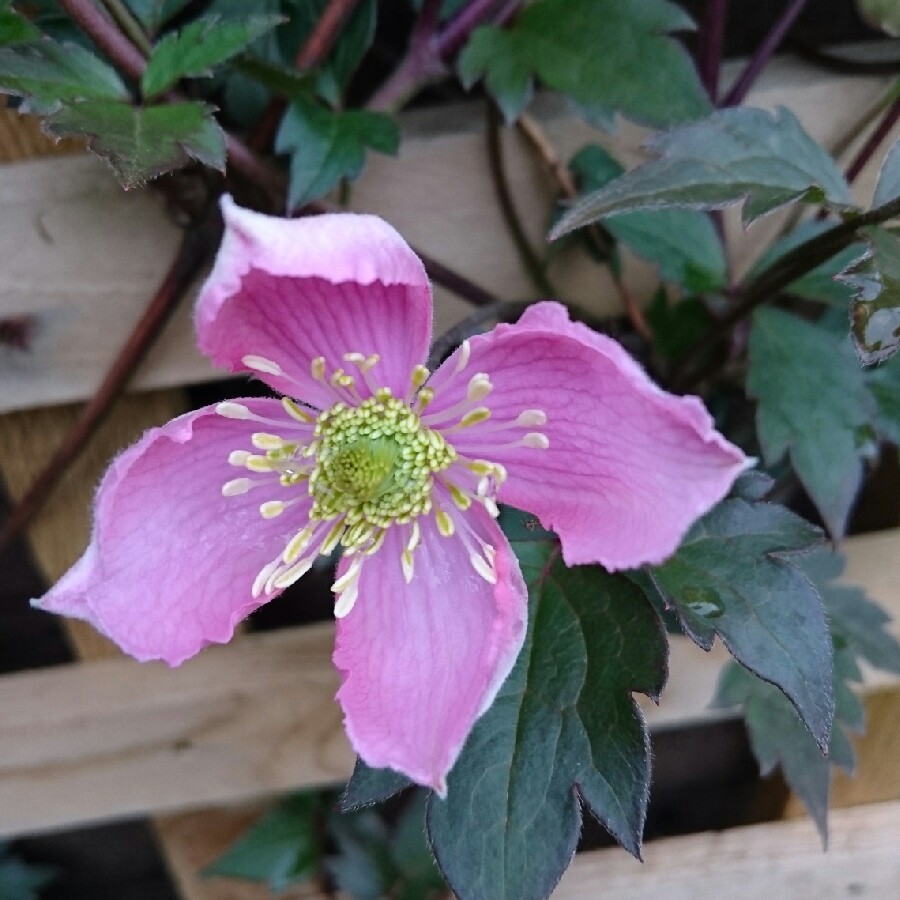
Clematis pink small-flowered montana rubens video
In the first two weeks, the seedlings are shaded from the scorching sun for lunch with burlap or agrofibre. This will help prevent burns on leaves and stems.
Watering
In order for the seedlings to take root faster, they are moistened every day - 20 liters of water are poured under one bush.
After a month, the frequency is reduced - they are guided by the amount of precipitation and the condition of the soil. If it is dry to a depth of 5-6 cm, it's time to moisturize.
Watering scheme for adult vines:
- in early spring, before the onset of swelling of the buds;
- at the stage of bud formation, after drying out;
- in the fall, when the shrub sheds its leaves.
For humidification, warm and settled water is used. The next day, the soil is superficially loosened to maintain its moisture and breathability. In parallel, weeds are removed, weeding the ground between the bushes. They also add mulch from peat, humus or sawdust. It will protect the root system from drying out and prevent the growth of unnecessary vegetation.
On hot days, mountain clematis montana Rubens is irrigated with water to prevent wilting, burning and drying of the crown. The procedure is carried out in the evening.
Top dressing
In the third year of cultivation, clematis is fed three times per season:
- at the beginning of spring (in the middle or at the end of March), the trunk circle is spilled with a solution of urea, ammonium nitrate or nitroammofoska - 15 g is dissolved in 10 liters of water;
- at the stage of bud formation, fertilize with a mixture of superphosphate and potassium sulfate - 1 tbsp. l. on a bucket of water;
- in the fall, when clematis will shed its foliage and enter the resting phase, compost or humus is embedded in the near-trunk zone - 10 kg / m².
In order for the roots to absorb nutrients faster, the bushes are watered abundantly after each fertilization.
Pruning
After planting, pinch the top of the seedling to stimulate its branching.
This plant belongs to the first pruning group - only those branches are cut out that thicken the crown, give it an irregular shape.
In the spring, unviable lashes are removed - shrunken, frozen, broken off by the wind. It is also necessary to cut off dried buds in time so that they do not take away strength from the shrub.
Preparing for winter
This procedure is started in the fall, on the eve of autumn frosts:
- the trunk circle is mulched with a thick layer of peat, humus or sawdust;
- branches are twisted into a ring, lowered to the ground, fixed with staples, insulated with spruce branches, then with burlap or agrofibre.
Young shrubs are kept under such insulation until spring. As soon as the snow thaws, the shelter is removed, the twigs are untied, leveled and tied to the support.
Reproduction methods
There are several options for how to get new seedlings from an adult shrub. If you follow all the rules for harvesting and planting the material, you will get a good result.
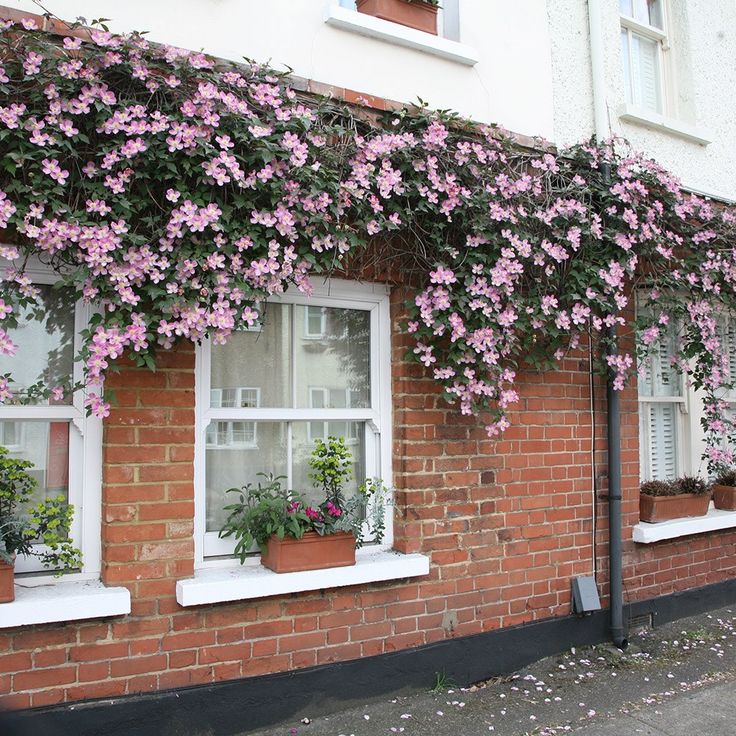
Mountain clematis rubens care
Cuttings
Cuttings are prepared in spring or summer. The green apices with several internodes, buds and leaves are used. At the bottom, the shoots are freed from foliage, then dipped in Kornevin's solution for an hour.
They are planted to a depth of 3-4 cm in a mixture of peat and sand, watered, covered with a transparent film, placed in a warm place with diffused light. Further maintenance consists in daily ventilation, if necessary, humidification.
New leaves are a sure sign of successful rooting. Then the film is removed, grown for another month, transplanted into open ground.
By dividing the bush
This method is effective against old vines, which do not bloom so luxuriantly and grow slowly. They need rejuvenation - they are watered abundantly, after an hour, when the earth gets wet, they are removed from the soil. They are dipped in a container of water to wash off the remnants of the soil, dried. The rhizome is cut into pieces - each should have several roots and at least one shoot with buds.
Places of cuts are sprinkled with charcoal, seated separately in the garden.
Stem layering
The best time for such reproduction is late autumn, when the liana will shed its foliage. Choose on it a lignified, long and flexible branch, close to the ground.
It is lowered into a previously dug trench in a horizontal position to a depth of 5-6 cm. Sprinkle with a mixture of peat, humus and sand (1: 1: 1), watered.
Closer to the first frost, they cover with any breathable material - fallen leaves, spruce branches, sawdust, straw or hay. This will prevent the layers from freezing in winter.
In the spring, as soon as the snow melts, the threat of recurrent frosts passes, the twig is dug up, cut off from the mother's clematis. Cut into segments with roots, seated separately in the same way as purchased seedlings.
Diseases and pests
This variety, like other varieties, is rarely infested with infections and parasites. The exception is shrubs growing in thickets and without proper care.
| Type of disease | Signs | Treatment |
| Rust | Brown or brown shapeless growths on foliage, stems. Over time, the affected areas turn yellow, die off and fall off. | Fungicides are used - the crown is irrigated in dry and cloudy weather with Bordeaux liquid, copper sulfate or Ridomil gold. |
| Powdery mildew (appears in rainy weather) | Whitish bloom on leaves, shoots, buds and flowers. The damaged areas become oily, darken and die off. | First, diseased areas are cut out, then irrigated with Topaz, Skor or Hom. |
| Wilt (wilting) | Leaves and stems quickly lose turgor, the whole crown withers. | It is not subject to treatment, so the sooner you remove the diseased vine from the site, the lower the risk of infection by a number of growing plants.The place where clematis grows is disinfected - spilled with a strong solution of potassium permanganate or copper sulfate. |
| Gray rot | It appears as brown spots with a grayish bloom. Later, the fungus affects all organs - flowers, buds, young growth. The plant stops growing, withers and eventually dies. | Unviable places on the crown are cut out, then irrigated with the Azocene or Bordeaux liquid. |
| Aphid | It settles in colonies on the underside of the leaves, feeds on their juice. As a result, damaged leaves wrinkle, turn yellow, dry and crumble. | At the initial stage, you can do without chemistry - irrigate the crown with an ash and soap solution, infusion of tobacco, garlic or onions. The neglected form is treated with pesticides - Karbofos or Aktellik. |
| Nematode | A dangerous parasite that damages the root system of clematis. Clogs blood vessels, as a result of which the roots do not receive oxygen and moisture. The crown withers quickly, the leaves turn yellow, crumble. | It is very difficult to destroy the pest, so it is easier to dig up the plant and dispose of it. The place of its growth is spilled with copper sulfate. |
How to apply in landscape
Used in single and group plantings for landscaping arches, pergolas, gazebos, terraces, fences and other vertical surfaces.
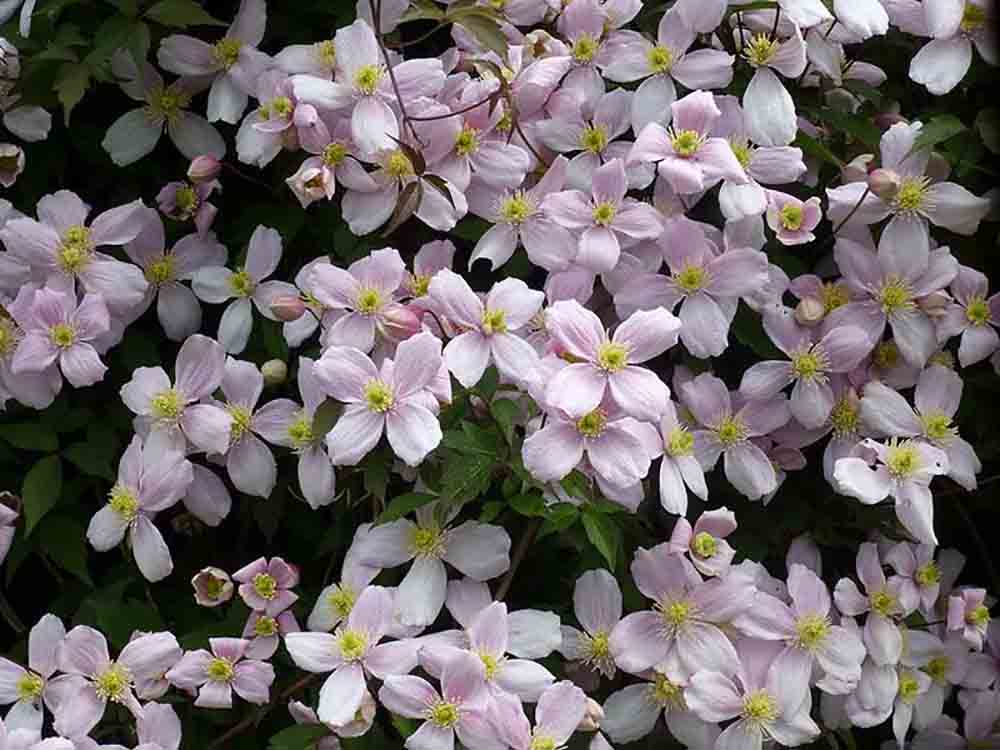
Clematis mountain rubens planting and care
They are planted together with low and medium-sized flowering and variegated plants. Used to decorate shrubs and trees.
Gardeners reviews
The perennial vine has received many positive reviews:
- tolerates frost well, recovers quickly after pruning and rarely gets sick with good care;
- reproduces successfully, while new seedlings have all the varietal characteristics of the mother bush;
- grows and blooms well among other flowers and shrubs, so it is used in different compositions.

